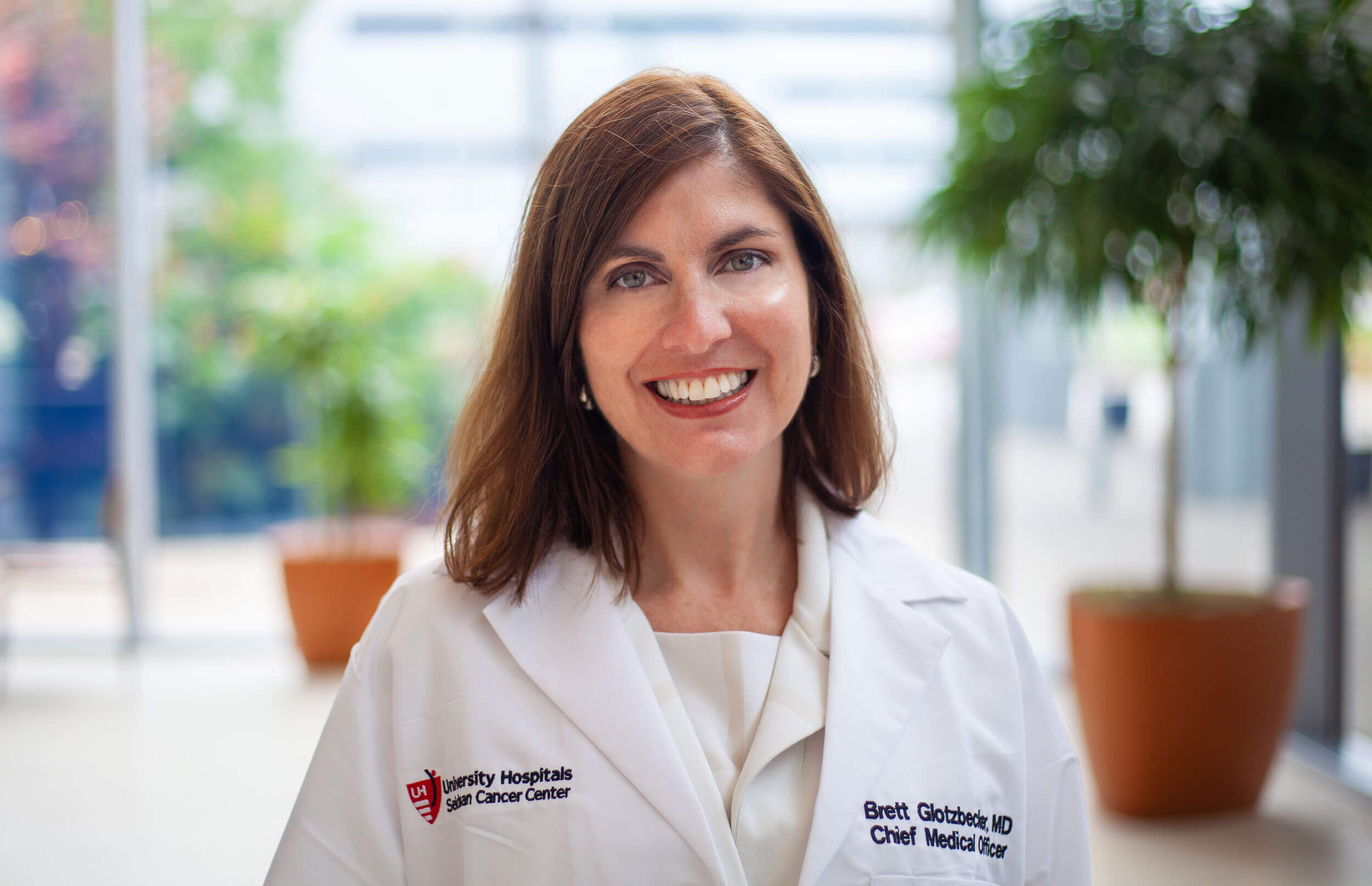Brett Glotzbecker, MD, Joins UH Seidman Cancer Center as Chief Medical Officer
November 06, 2019
She is a hospitalist with 15 years of experience at Dana-Farber Cancer Institute
Innovations in Cancer | Fall 2019
A quality expert and lead oncology hospitalist from the Dana-Farber Cancer Institute in Boston – the principal teaching affiliate for Harvard Medical School and one of the nation's highest-ranked cancer hospitals -- has joined University Hospitals Seidman Cancer Center as Chief Medical Officer.
 Brett Glotzbecker, MD
Brett Glotzbecker, MDAs Chief Medical Officer at UH Seidman Cancer Center, Dr. Glotzbecker is overseeing quality and the patient experience for all disease teams and tumor conferences, providing focused leadership for achieving all key certifications. She is also serving as the senior physician liaison for cancer practitioners throughout the UH system, which includes 18 UH Seidman sites.
We sat down for a conversation with Dr. Glotzbecker as she begins her tenure at UH Seidman Cancer Center.
Q: An oncologist of your training and experience would have many options for where to practice, lead and make a difference for cancer patients. What was it about UH Seidman Cancer Center that led you to the decision to relocate to Cleveland?
A: UH Seidman Cancer Center is a special place. We are far ahead in the approach of value-based medicine, focusing on the patient’s role. That’s what I love – it’s about the patient! Each department that I have visited here has that same mentality. In other institutions, there are strategic objectives for the year which include patient-centric care, however, that is not always the priority. Here, the strategic vision and objectives are patient-centric. The objectives come from what the patient needs, and that is the kind of environment I was seeking.
Q: What are some of the significant challenges facing oncologists and cancer patients today?
A: One of our biggest challenges is bringing care to the patients in the community and having the necessary resources to treat them at the best site of care, which is typically at home. There are a lot of families struggling to travel to main campus, as it’s often far from where they live. This is a big hurdle for many of our patients. Our patients want to be able to spend time with their families, especially for our cancer patients undergoing difficult treatment or nearing the end of life. Finding a way to bring care into their communities will alleviate some of that hardship.
Q: Building on your response to the last question, one of the hallmarks of UH Seidman Cancer Center is providing patients with care close to home, in one of our 18 community-based locations. What’s your approach to ensuring that care is of consistently high quality across so many different sites?
A: Maintaining consistently high-quality care across our locations comes from fostering a sense of community among all of our providers. We have an excellent system of multidisciplinary teams and Tumor Boards. Reviewing the patients together as one team, no matter the physical site of care, is very important. It’s crucial to oversee a standard of quality in all locations and bring quality metrics to meet in one place. I also think it’s critical to work with clinical pathways to ensure standards of care are being met.
Q: Will you continue to see patients in your new role at UH Seidman Cancer Center?A: I will continue to do 12 to 14 weeks per year of inpatient care, with the majority of time on hematologic malignancies and bone marrow transplant. I will also spend some time on the solid tumor services as a way to help troubleshoot issues.
For more information about UH Seidman Cancer Center and Dr. Glotzbecker, please email Brett.Glotzbecker@UHhospitals.org.


